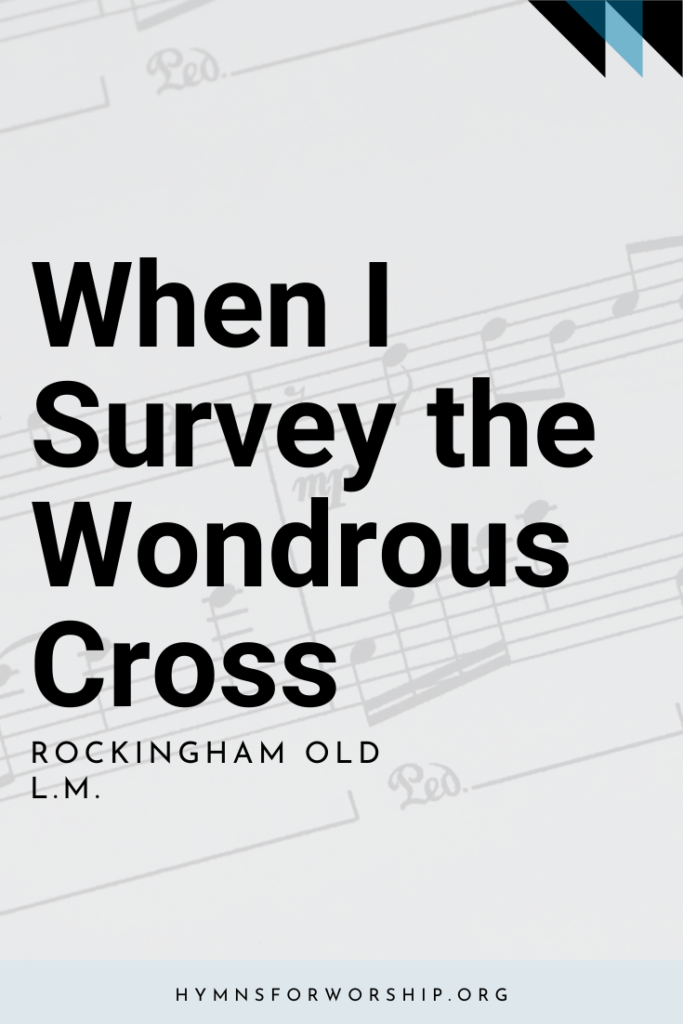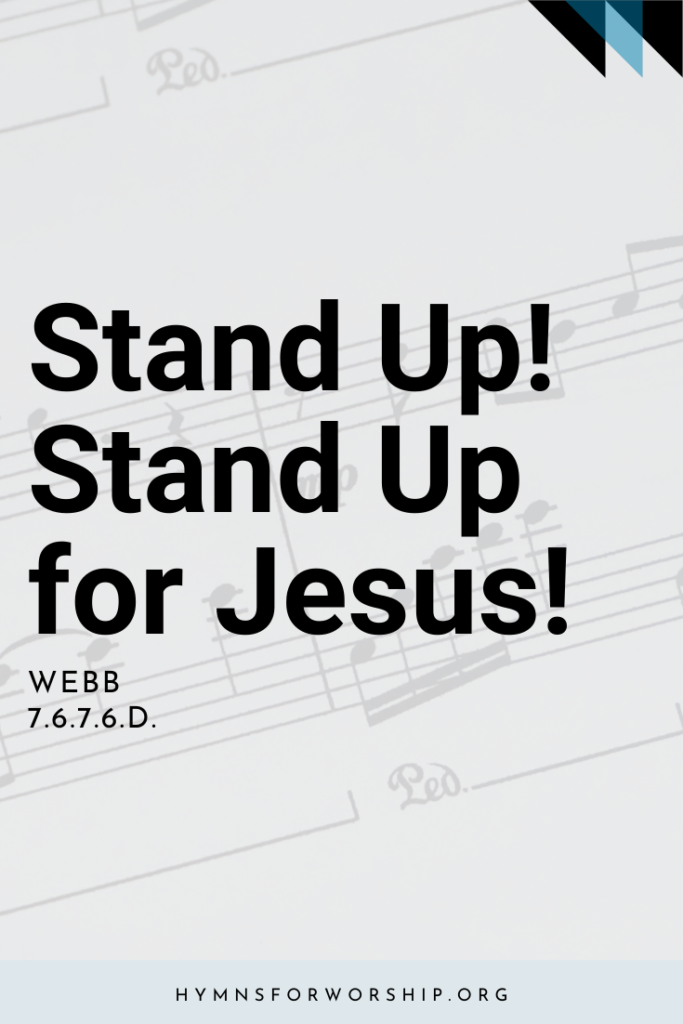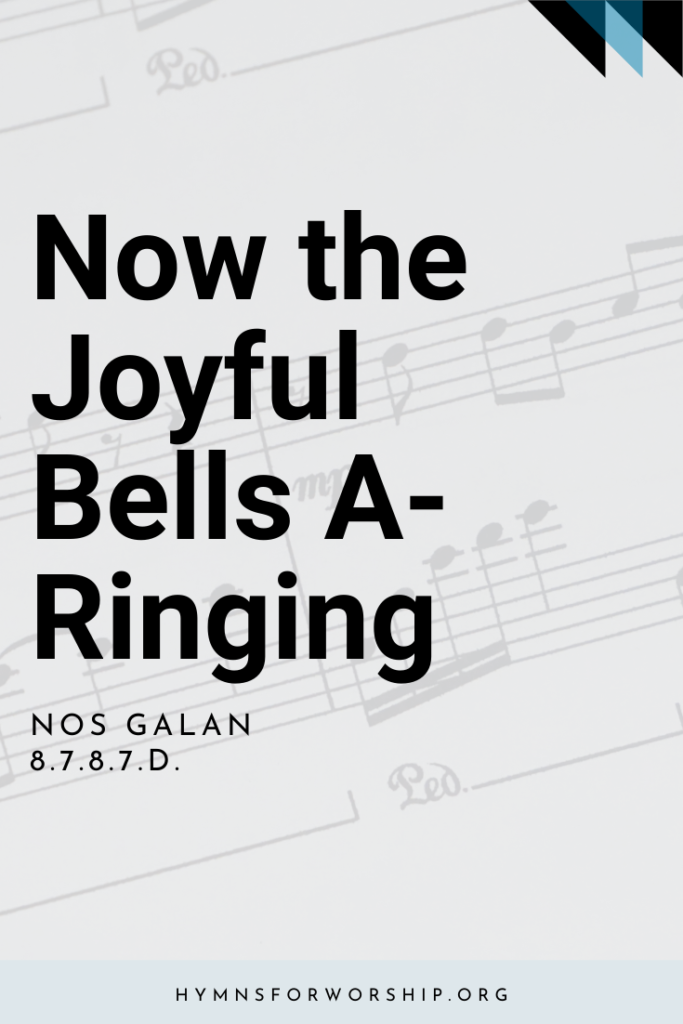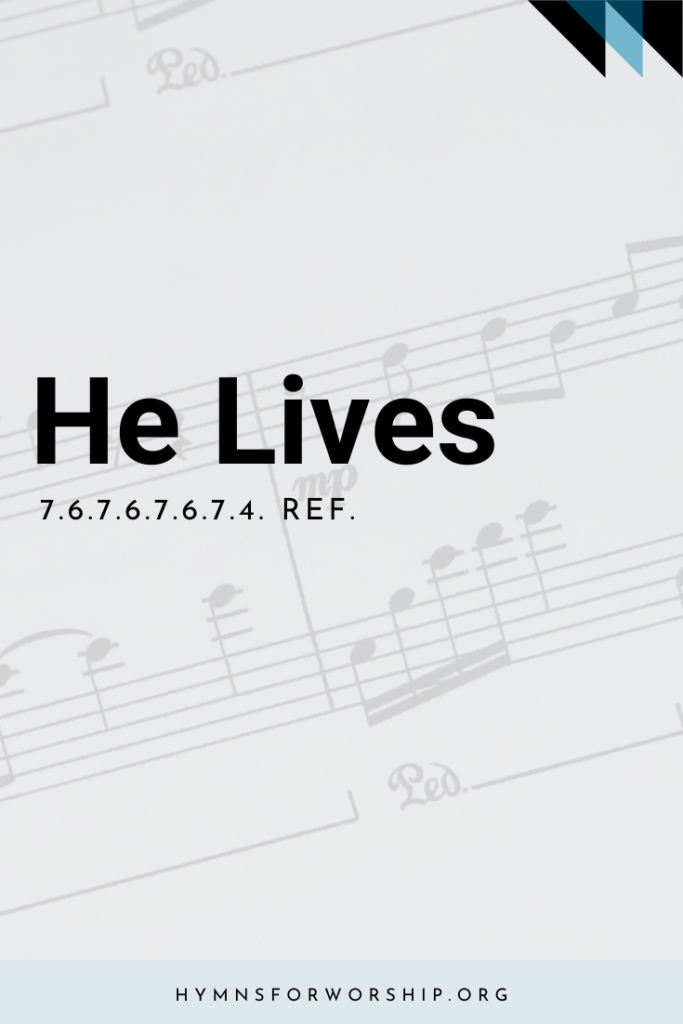WORSHIP >> Adoration & Praise
SDAH 27
Rejoice ye pure in heart!
Rejoice, give thanks, and sing;
Your festal banner wave on high,
The cross of Christ your King.

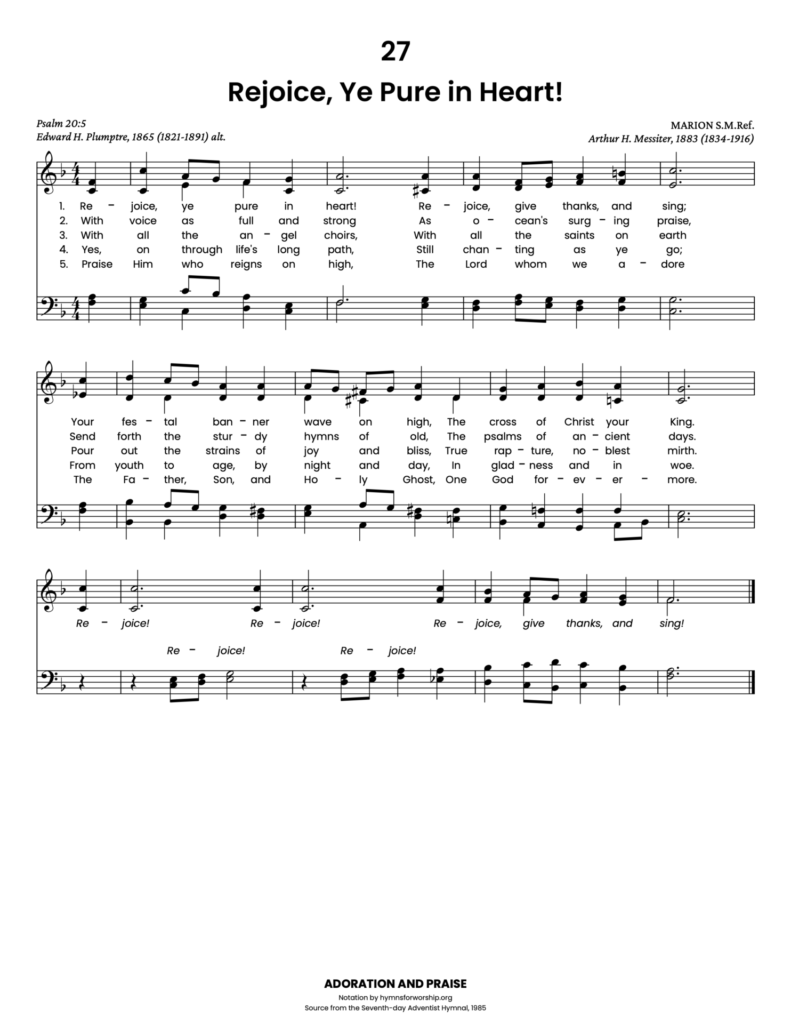
Get the hymn sheet in other keys here
For Worship Leaders
Make each hymn more meaningful with these helpful tools: Short, ready-to-use hymn introductions for church bulletins, multiple ways to introduce a hymn based on your worship theme and in-depth history and insights to enrich your song service.
Hymn Spotlight: Rejoice, Ye Pure in Heart
A triumphant hymn of joyful procession, Rejoice, Ye Pure in Heart was written by Edward Hayes Plumptre in 1865 for a choir festival at Peterborough Cathedral. Inspired by Psalm 20:5—*”We will rejoice in thy salvation, and in the name of our God will set up our banners”—*the hymn originally had 11 stanzas to accommodate the long cathedral processional, symbolizing the Christian’s journey toward the New Jerusalem.
Plumptre (1821–1891) was a noted Anglican theologian, preacher, and hymn writer, known for his profound scholarship and poetic hymns. His words reflect Philippians 4:4, calling believers of all ages to “Rejoice in the Lord always!”
The tune, MARION, was composed in 1883 by Arthur Henry Messiter and named after his mother. It is unusual for its shifting key changes, adding musical energy and forward movement, perfect for a hymn of joyful celebration.
As we sing today, may our voices ring with gladness, lifting banners of praise as we continue our journey of faith!


Text
1
Rejoice ye pure in heart!
Rejoice, give thanks, and sing;
Your festal banner wave on high,
The cross of Christ your King.
Refrain
Rejoice, rejoice, rejoice,
Give thanks and sing.
2
With voice as full and strong
As ocean’s surging praise,
Send forth the sturdy hymns of old,
The psalms of ancient days.
3
With all the angel choirs,
With all the saints of earth,
Pour out the strains of joy and bliss,
True rapture, noblest mirth.
4
Yes, on through life’s long path,
Still chanting as ye go;
From youth to age, by night and day,
In gladness and in woe.
5
Praise Him who reigns on high,
The Lord whom we adore,
The Father, Son and Holy Ghost,
One God forever more.

Hymn Info
Biblical Reference
(a) Ps 20:5 (b) Ps 148:12
Author
Edward H. Plumptre (1821-1891)
Year Published
1865
Hymn Tune
MARION
Metrical Number
S.M. Ref.
Composer
Arthur H. Messiter (1834-1916)
Year Composed
1833
Theme
ADORATION & PRAISE


